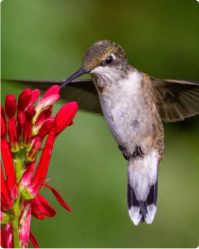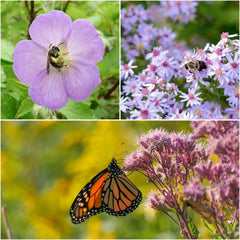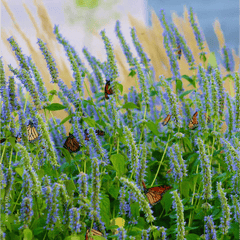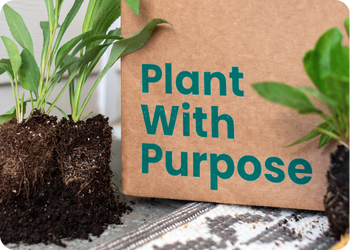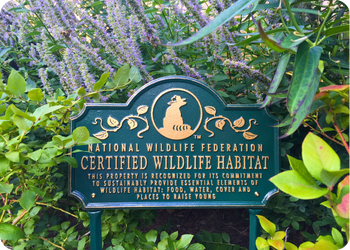Garden for Wildlife Month: How To Make An Impact


Every May, we celebrate Garden for Wildlife Month as a way to remind us of our collective impact as gardeners for wildlife: we get to highlight incredible stories, and share ideas to connect and learn from one another. Any level of gardener or non gardener can learn more about attracting wildlife and find new ways to make a meaningful difference for them in any size space.
Our goal is to reach one million wildlife gardens by 2027. With your help, we are well on our way. Since our launch of Garden for Wildlife Native Plant Collections™ in 2021, we are close to 10,000 gardens!
A survey commissioned by the National Wildlife Federation, in partnership with the National Gardening Association, found more people are gardening for wildlife by purchasing native plants and landscaping that help pollinators like at-risk butterflies, bees and birds.
The survey is part of an annual consumer gardening report that coincides with the National Wildlife Federation’s 10th annual Garden for Wildlife™ Month. It also found:
— One in three U.S. adults (34%) purchase plants to help wildlife. An increase from 26 percent in 2020.
— One in four people (25%) specifically buy native plants. An increase from 17% in 2020.
— The number of people planning to transform a portion of their lawn to wildflower native landscape has doubled from 9% in 2019 to 19% in 2021.
— One in three respondents (32%) stated they are choosing to purchase mostly or all organic products.
The National Gardening Survey collected responses from 2,601 U.S. adults and has a margin of error of ± 2 percentage points. Full survey results can be found here.
Garden for Wildlife month is more successful when we all participate. Whether your space is small or large, it is possible for us to make a collective impact for wildlife. If you can’t plant right now, be sure to share any tips you’ve got in the comments below or tag us on social media #GardenForWildlife. The more awareness we raise, the bigger difference we can all make!
Below are a few ideas to help you #GardenForWildlife this May (and every month).
#1 Plant native plants - we’ve got you covered here! Wildlife evolved alongside native plants in your area and use as food, shelter, and places to raise young. Nearly every living creature on the planet relies on native plants. They are the foundation of local food webs; giving butterflies, birds, and other wildlife what they need to survive.
#2 Don’t use chemicals! If you choose native plants, you’ll have less need for chemicals. Our plants do not use neonicotinoids, a systemic chemical harmful to wildlife. Find organic gardening practices like composting to add to your habitat.
#3 Wildlife needs water! A water source can be anything from a puddling dish or bird bath to a rain garden or pond. Just be sure to keep it clean for your visitors.
#5 Got all of the above? The next step is getting officially certified as a National Wildlife Federation Certified Wildlife Habitat®. Turning your yard, container garden, or even schoolyard into a Certified Wildlife Habitat® is fun, easy, and can make a lasting difference for wildlife. Registering your new native plant garden helps increase the amazing Certified Wildlife Habitat® community, currently at 273,000.
When you certify, your $20 application fee supports the National Wildlife Federation's programs to inspire others to make a difference and address the issues leading to declining habitat for wildlife nationwide. A portion of your fee also supports work for local wildlife in select affiliate partner states. During the month of May, you can receive a 20% discount when you certify and purchase a sign to shout out your commitment to wildlife.
Don't forget to follow us on social media, and share to raise awareness.
@GardenForWildlife on Instagram
Garden For Wildlife on Facebook
Garden for Wildlife on Pinterest

Find Native Plants by Zip Code
We took the guesswork out of planting native. Check your zip to see what ships!


